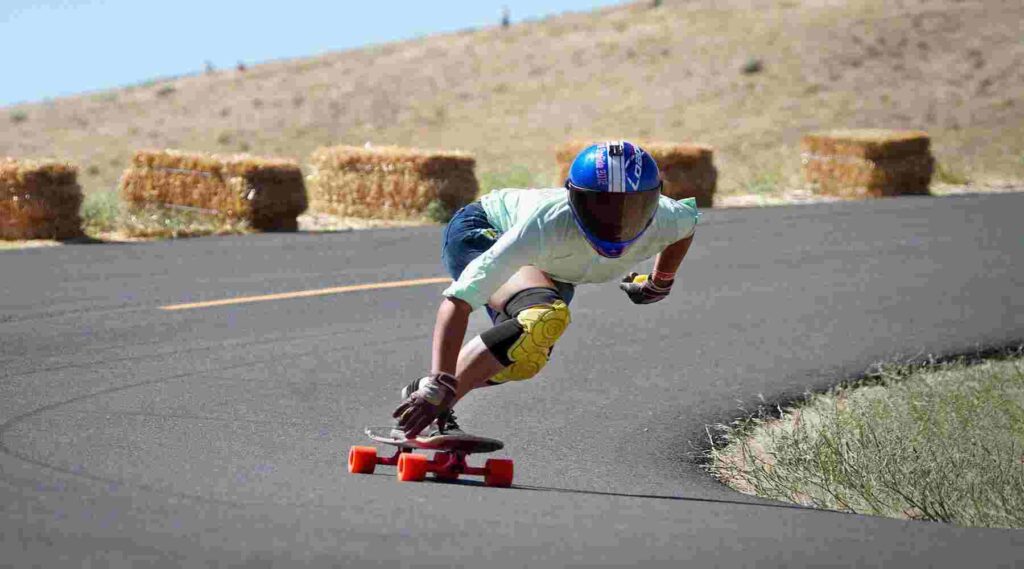Page Contents
ToggleWhen it comes to skateboarding, speed is an exhilarating aspect that captures the attention of both riders and enthusiasts alike. Skateboarding has evolved over the years, and with advancements in technology and skill, riders have been able to push the boundaries of speed. In this article, we will delve into the question: “How fast can a skateboard go?” to provide you with insights into the impressive speeds achieved by skateboarders.
Maximum Speed: Pushing the Limits

Skateboarding speeds can vary significantly depending on various factors such as the rider’s skill level, the terrain, and the type of skateboard being used. In general, the average speed of a skateboarder typically ranges from 10 to 20 miles per hour (16 to 32 kilometers per hour). However, experienced riders and professional skateboarders can reach much higher speeds.
Downhill Thrills: Speeding on the Slopes

One of the most thrilling aspects of skateboarding is downhill riding. Downhill skateboarding involves racing down steep slopes, utilizing gravity to achieve incredible speeds. Skilled downhill skateboarders can reach speeds of up to 40 to 50 miles per hour (64 to 80 kilometers per hour) or even higher.
To attain these high speeds, downhill skateboarders use specialized boards that are designed for stability and speed. These boards often feature longer wheelbases, lower centers of gravity, and wider trucks, allowing riders to maintain control while blazing down the hills.
Speed Records: Chasing the Need for Speed

Skateboarding speed records continue to be broken as riders push themselves to reach new limits. In recent years, professional skateboarders have been able to achieve astonishing speeds. For instance, in 2017, Peter Connolly, a renowned downhill skateboarder, set the Guinness World Record for the “Fastest Speed on a Skateboard” at a mind-boggling 91.17 miles per hour (146.73 kilometers per hour).
It is worth noting that achieving such extreme speeds requires exceptional skills, rigorous training, and adherence to strict safety measures. Downhill skateboarders often wear specialized protective gear, including helmets, knee pads, and gloves, to ensure their safety in case of a fall.
Factors Influencing Speed

Several factors contribute to the speed of a skateboard. The type of skateboard wheels, bearings, and trucks can greatly impact the overall speed and performance. Smoother wheels with high-quality bearings reduce friction and enable faster speeds. Likewise, trucks that provide stability and control allow riders to maintain their balance at high velocities.
The riding surface also plays a crucial role. Smooth and well-paved surfaces offer less resistance, allowing skateboarders to achieve higher speeds. In contrast, rough or uneven terrain can hinder speed and pose potential safety risks.
Closing Thoughts
In the world of skateboarding, speed is an exciting element that captivates riders and spectators alike. While the average speed of a skateboarder falls within the range of 10 to 20 miles per hour, professional skateboarders can reach much higher speeds, especially during downhill rides. These daredevils can achieve speeds of up to 40 to 50 miles per hour or even break records like Peter Connolly, who reached a staggering 91.17 miles per hour.
Remember, skateboarding at high speeds requires extensive practice, skill, and adherence to safety precautions. Whether you’re a beginner or an experienced rider, always prioritize safety while enjoying the thrill of speed on your skateboard.
So, the next time you ask, “How fast can a skateboard go?” remember that it’s not just about the speed itself, but the passion, dedication, and expertise of the skateboarder that truly make skateboarding an exhilarating and awe-inspiring sport.



